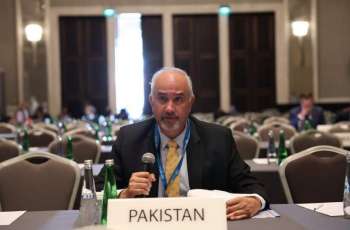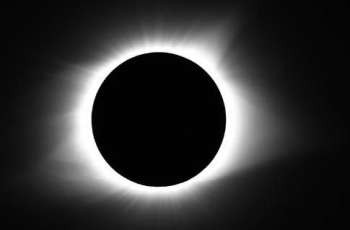MOSCOW (Pakistan Point News / Sputnik - 11th April, 2019) Thursday marks the annual International Day of Fascist Concentration Camps Prisoners Liberation, established to commemorate the uprising of the detainees at Buchenwald concentration camp in Germany, which took place on April 11, 1945.
Concentration camps are places where a large number of people is detained on political, social, racial, religious and other grounds. These camps used to be widely spread in Nazi Germany, where communists, social democrats, trade union leaders, as well as people who were persecuted for racial, religious, social and other reasons were kept.
The first Nazi concentration camp was established near the German town of Dachau in March 1933. By the beginning of World War II, 300,000 German, Austrian and Czech political prisoners were kept in concentration camps and jails in Germany. In the following years, Germany under the leadership of Adolf Hitler, established a giant network of concentration camps in the occupied European countries. Subsequently, Nazis used concentration camps to systematically murder millions of people.
Among the world-famous Nazi concentration camps, in which tens and hundreds of thousands of prisoners were kept, were the Auschwitz concentration camp with 4 million prisoners, Majdanek with 1.3 million prisoners, Mauthausen-Gusen with 122,000 prisoners, Sachsenhausen with 100,000 prisoners, Ravensbruck with 92,700 prisoners, Treblinka with 80,000 prisoners, and the Stutthof with 80,000 prisoners. Around 12-15 percent of the prisoners were children under the age of 14. Out of the 18 million prisoners, 11 million were killed.
In the Auschwitz concentration camp, up to 30,000 people could be killed daily. All the way down to 20 percent of the total losses in World War II were children.
Buchenwald was one of the largest Nazi concentration camps. It started operating near the German city of Weimar in 1937. By 1945, according to various estimates, it had from 66 to 130 outlying detention centers.
The largest subcamps of Buchenwald were Dora, which was located near the city of Nordhausen in eastern Germany; Laura, located near the German towns of Saalfeld and Ohrdruf in the German state of Thuringia. During the existence of the Buchenwald (1937-1945), about 239,000 people were its prisoners. At first, the prisoners were German anti-fascists, and later, during the World War II, the inmates were of many other nationalities. Prisoners were tortured, subjected to felonious medical experiments, starved and exploited by the owners of large industrial firms.
More than 56,000 people of 18 nationalities, including 19,000 Soviet prisoners of war, died in Buchenwald.
Anti-fascist resistance groups operated in the camp. On April 11, 1945, Buchenwald's prisoners learned about the advance of the allied forces, instigated a revolt, disarmed and captured about 200 guards, taking control of the camp. The US troops entered the camp a day later.
The system of concentration camps in Germany was eliminated along with the defeat of Nazism, and denounced by the International Military Tribunal at Nuremberg as a crime against humanity.
The International Union of Former Juvenile Prisoners of Fascism was formed on June 22, 1988. The organization is the world's only structured public association that brings together citizens of Armenia, Belarus, Kazakhstan, Latvia, Lithuania, Moldova, Russia, Uzbekistan, Ukraine, Estonia, and Bulgaria, who used to be the detainees in concentration camps, ghettos, prisons, and other places that were created by Nazi Germany. At the time of the formation, the union included approximately 1.2 million former juvenile prisoners.
Commemorative events and ceremonies to pay respect to those who have lost their lives, and the laying of flowers at the graves and burial places of victims of fascism take place all around the world on the International Day of Fascist Concentration Camps Prisoners Liberation.



